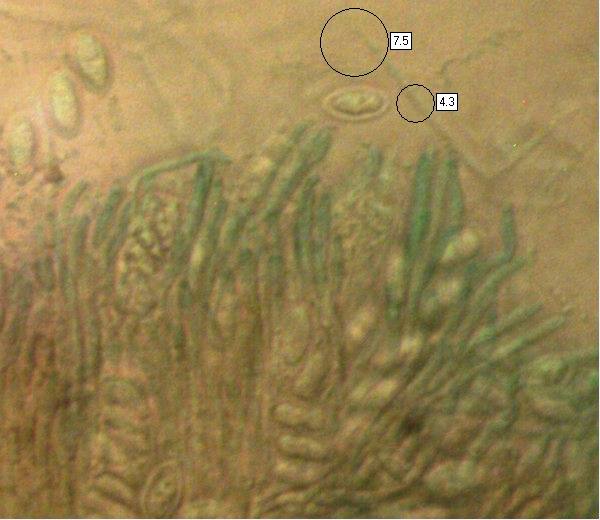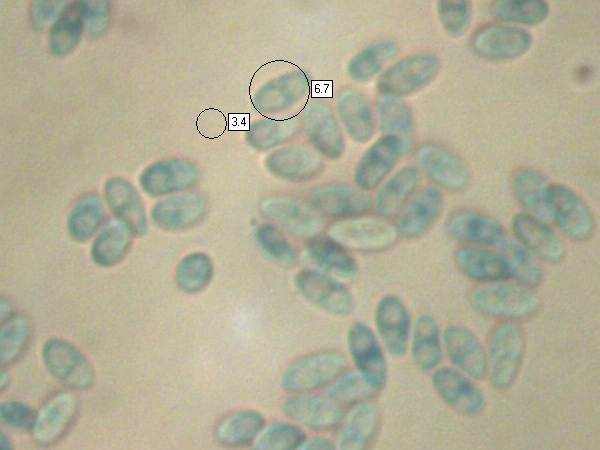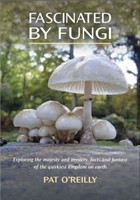Neobulgaria pura (Fr.) Petr. - Beech Jellydisc
Phylum: Ascomycota - Class: Leotiomycetes - Order: Helotiales - Family: Helotiaceae
Distribution - Taxonomic History - Etymology - Identification - Reference Sources
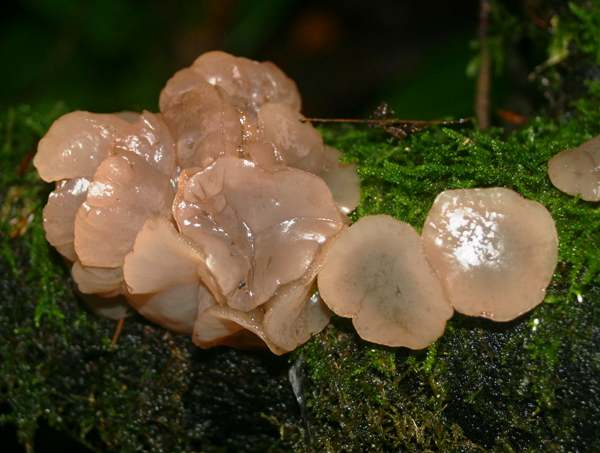
Formerly-used synonyms of this jelly-like fungus include Bulgaria pura. Unlike Bulgaria inquinans, which sometimes fruits on dying branches of living trees, Neobulgaria pura is invariably found on fallen trunks and branches of broadleaf hardwood trees, and in particular Beech trees – hence the common name.
The form shown here is properly cited as Neobulgaria pura var. pura; a more contorted form also occurs and it is referred to as Neobulgaria pura var. foliacea.
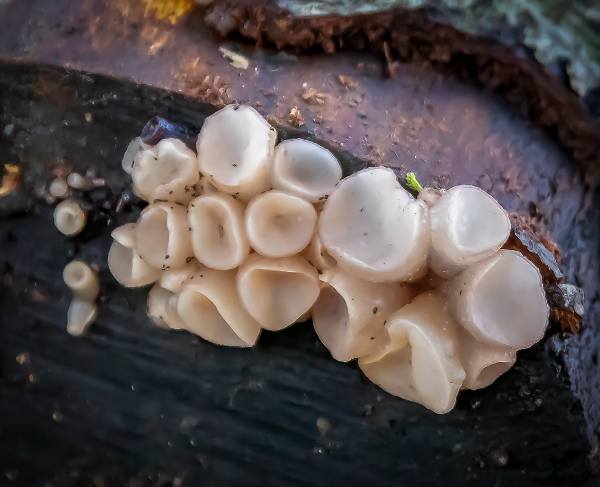
Distribution
An uncommon but far from rare woodland species in Britain and Ireland, Neobulgaria pura is found also throughout mainland Europe.
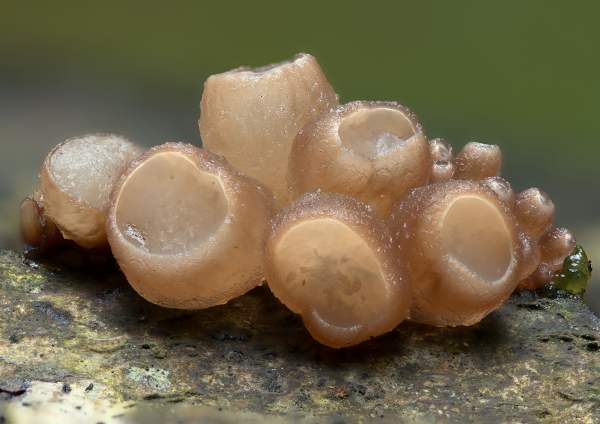
Taxonomic history
The basionym of this species was originally defined by Persoon and accepted by the great Swedish mycologist Elias Magnus Fries in his 1822 publication Systema Mycologicum. The currently accepted scientific name of this species was established in 1921 by Austrian mycologist Franz Petrak (1886 - 1973).
Synonyms of Neobulgaria pura include Bulgaria pura Fr., Ombrophila pura (Pers.) Quél., and Neobulgaria pura (Fr.) Petr.
Neobulgaria pura is the type species of its genus, which was circumscribed by Petrak in 1921.
Despite the word 'Jelly' appearing in its common name and very well reflecting its texture, this is not one of the hererobasidiomycetes 'Jelly Fungi' which belong to the - Class Basidiomycota. Neobulgaria pura belongs to the Ascomycota, as also does its swarthy lookalike Bulgaria inquinans.
In 1969 Neobulgaria pura var. foliacea (Bres.) Dennis & Gamundí was separated from the nominate form Neobulgaria pura var. pura; it is similar but has ripple-folded (brain-like) fruitbodies rather than individual 'buttons'. Older synonyms of this variety include Coryne foliacea Bres., and Neobulgaria foliacea (Bres.) Dennis.

Etymology
Neobulgaria, the genus name, may be a reference to the leathery skin - a bulgar was a leather pounch within which wine was carried. (The neo- prefix suggests something new or recent, but it can also mean 'similar to'.) Any other suggestions would be most welcome! Much more straightforward, the specific epithet pura comes from the Latin adjective purum and means pure or clean.
Identification guide
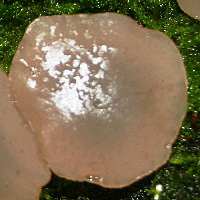 |
FruitbodyPinkish-ochre, gelatinous fruitbodies initially shaped like spinning tops but eventually distorting as they push up against one another in groups; becoming more cup-like. This species is quite variable in size, the individual cups being typically 0.4 to 1.5cm across and up to 8mm tall. A brain-like form, Neobulgaria pura var. foliacea has a folded structure. |
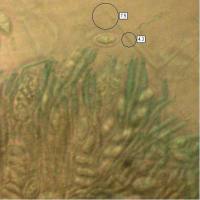 |
Asci and ParaphysesEight spored asci interspersed with narrow cylindrical or slightly clavate paraphyses 70-95µm x 7-8µm. |
 |
SporesEllipsoidal, smooth, 6.5-9 x 3-4.5µm; each spore containing two small oil drops. Spore printWhite |
Odour/taste |
Not distinctive. |
Habitat & Ecological role |
On fallen broad-leaved trees, particularly Beech and oaks. |
Season |
Summer and autumn. |
Similar species |
Bulgaria inquinans is similar in form but black or very dark brown. |
Reference Sources
Fascinated by Fungi, 2nd Edition, Pat O'Reilly 2016, reprinted by Coch-y-bonddu Books in 2022.
Dennis, R.W.G. (1981). British Ascomycetes; Lubrecht & Cramer; ISBN: 3768205525.
Breitenbach, J. & Kränzlin, F. (1984). Fungi of Switzerland. Volume 1: Ascomycetes. Verlag Mykologia: Luzern, Switzerland.
Medardi, G. (2006). Ascomiceti d'Italia. Centro Studi Micologici: Trento.
Dictionary of the Fungi; Paul M. Kirk, Paul F. Cannon, David W. Minter and J. A. Stalpers; CABI, 2008
Taxonomic history and synonym information on these pages is drawn from many sources but in particular from the British Mycological Society's GB Checklist of Fungi.
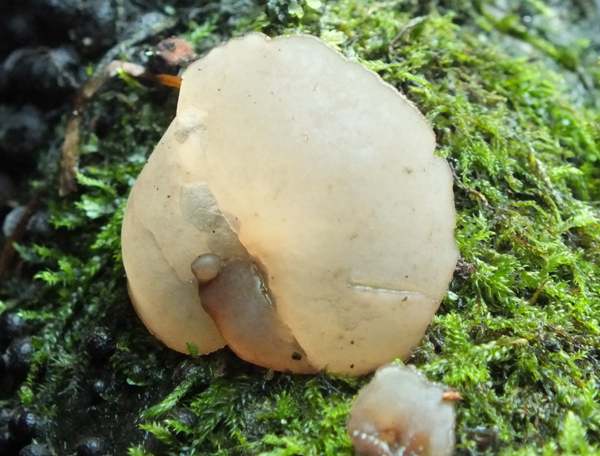
Acknowledgements
This page includes a picture kindly contributed by David Kelly and Tony Mellor.
Fascinated by Fungi. Back by popular demand, Pat O'Reilly's best-selling 450-page hardback book is available now. The latest second edition was republished with a sparkling new cover design in September 2022 by Coch-y-Bonddu Books. Full details and copies are available from the publisher's online bookshop...
